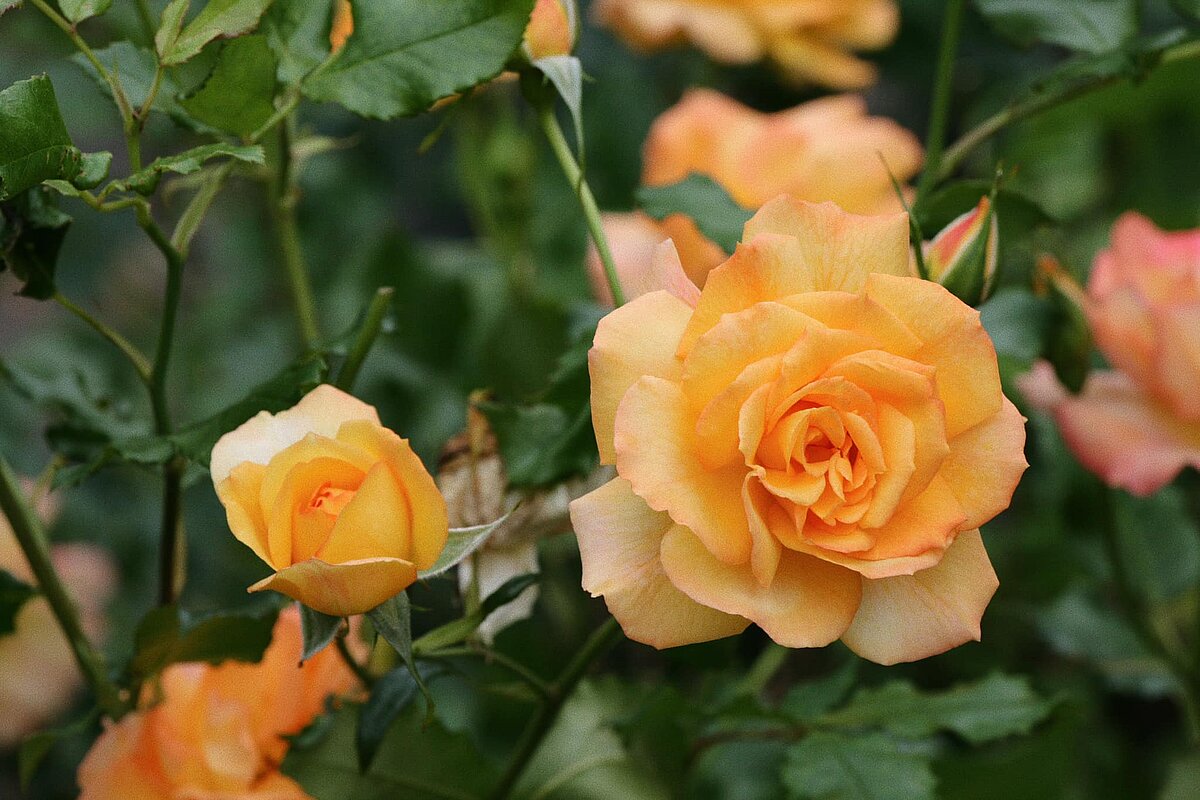
Most of the roses on display in the Botanical Garden have been selected in Europe during the last 50 years. The most suitable for Latvia's climate, the most resistant to Latvian winters and the most suitable for the conditions of the Botanical Garden of the University of Latvia have been selected. In the middle of summer, every year, floribundar, polyanthrose, clematis, parka, bush rose and tea hybrid varieties bloom in the rose beds in front of the Palm house.
About roses in general
Roses are perennial shrubs and semi-shrubs. They belong to the rose family of the rose family. There is no consensus among scientists about the number of species in the rose genus - the most popular opinion is that there are about 400 species in the rose genus, but some botanists believe that the true number of species in the genus is smaller, because the species form hybrids with each other, which are not considered separate species. Roses are widely selected crops, so the number of their varieties has many times exceeded the number of species - there are more than 25 thousand different varieties of roses in the world.
Roses are native to Eurasia and North America, but today they are cultivated almost all over the world. Roses are distributed mainly in the northern hemisphere. Certain species are able to grow even near the Arctic Circle. The further range of distribution of roses in the southern directions reaches tropical areas.
The height of rose bushes can be very different, for example, the bushes of the Roulette rose are 25-35 cm high, but for the grooved rose and dog rose they can even exceed 2 m.
Roses are characterized by the fact that their shoots are almost always covered with sharp thorns of various sizes and shapes. Stingles are special growths of the plant, the plant's natural defense. Rose thorns are often mistakenly called thorns. Thorns are present in all the well-known cacti, sea buckthorn, but not roses. How to distinguish between a thorn and a sting? The thorn cannot be broken, but the sting can be easily separated from the stem.
Roses are propagated by seeds in the wild. They are mostly spread by birds, also by the wind. However, this method is not suitable for cultivated roses ("pure varieties") - in order to create roses with certain, constant characteristics, vegetative propagation is carried out.
After the roses bloom, fruits are formed, which gradually change color from green to orange, then red or blackish. Rose fruits are very healthy - they contain 1-14% vitamin C, vitamin A, several B group vitamins.
Botanical Garden is open every day from 10.00 a.m. to 9.00 p.m. Entrance ticket prices can be viewed HERE.

 CONFERENCE
CONFERENCE





